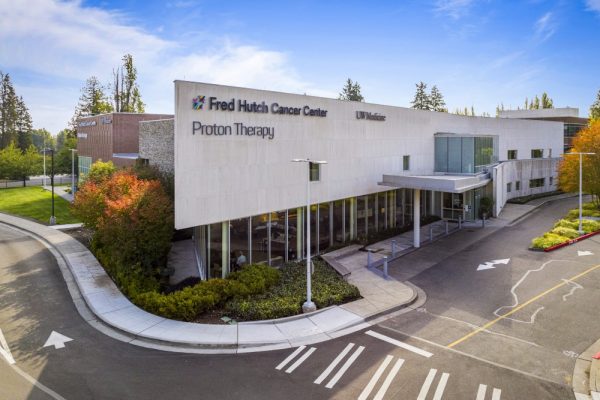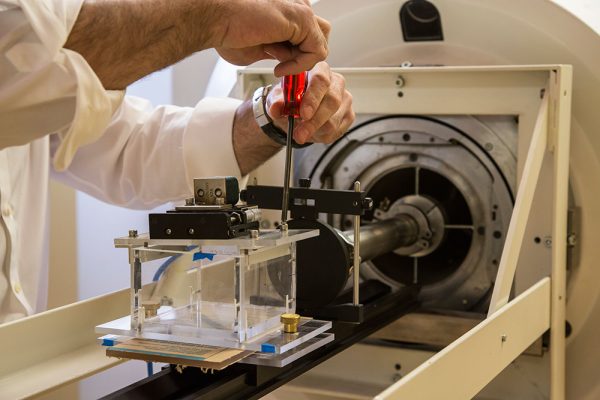In recent years, there has been tremendous interest in ultra-high dose-rate radiation (dose rate over 40 Gy/s, >1000 times faster dose rate than conventional radiation) for cancer treatment, due to the observed “FLASH effect” in multiple preclinical studies – a phenomenon that preferentially spares normal tissues without sacrificing anti-tumor efficacy when compared to conventional dose-rate radiation. The FLASH effect has been reported in several in vivo models spanning multiple body sites and normal tissues including the brain, lungs, & intestinal tract.
The University of Washington/Fred Hutch Cancer Center provides a unique opportunity for studying the FLASH effect in small animals and translating the preclinical work to patients. Studying the FLASH effect requires specialized equipment because clinical linear accelerators, the primary piece of machinery used in radiation oncology patient treatment, are not capable of generating the ultra-high dose rate required for FLASH. Most of the published preclinical data on FLASH-RT employs the use of electron beam radiation, which has a very shallow depth of penetration into tissue (around 2 cm) – appropriate for small animals, but not for humans. However, many proton therapy machines are capable of producing the ultra-high dose rate, and the University of Washington medical system has access to two proton radiation facilities for both small animals and patients, allowing a unique opportunity for translational work in FLASH radiation.


Our preclinical proton beamline was developed and optimized by our UW team, specifically designed for in vivo investigations of radiobiological effects of proton therapy in small animals, including FLASH. These machines are very expensive to build and maintain, and not typically built for animal experiments. However, UW has a patient treatment facility with neutron radiation, and our team adapted that facility to also provide proton radiation for mouse experiments. The Fred Hutch Proton Center has been operational since 2013 and treats hundreds of patients per year with proton radiation. We have worked with IBA to modify the proton center beamline to be capable of delivering FLASH dose rates and have been conducting preclinical work there. We hope to have early phase clinical trials for patients in the next few years.

